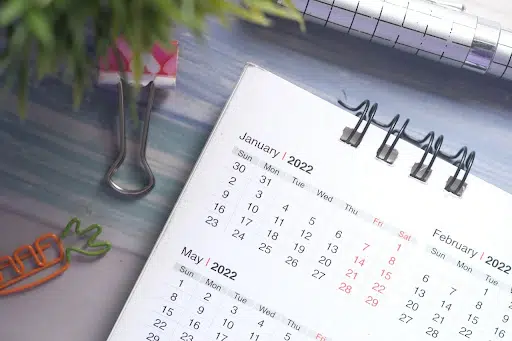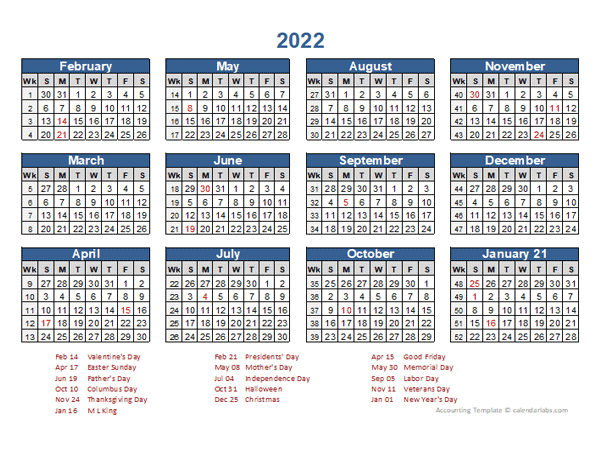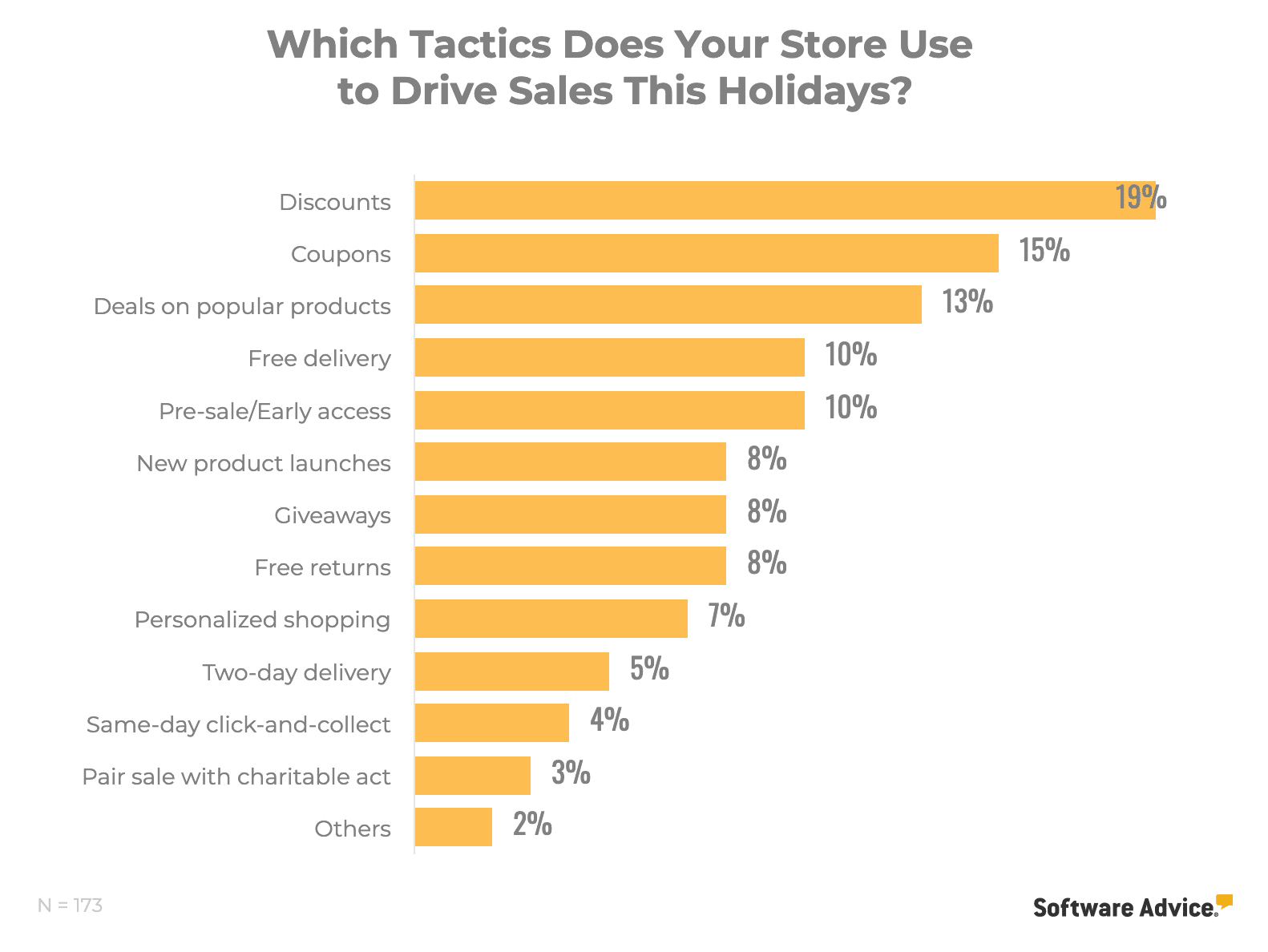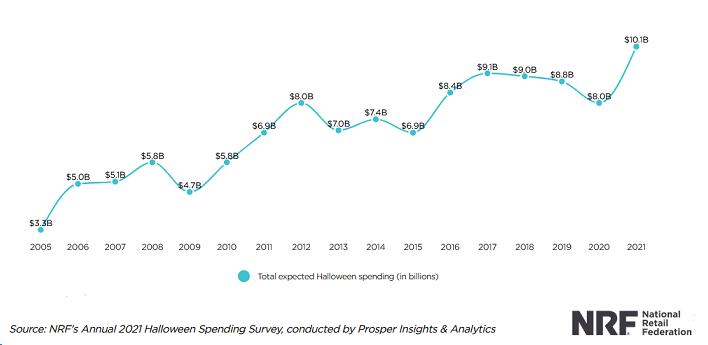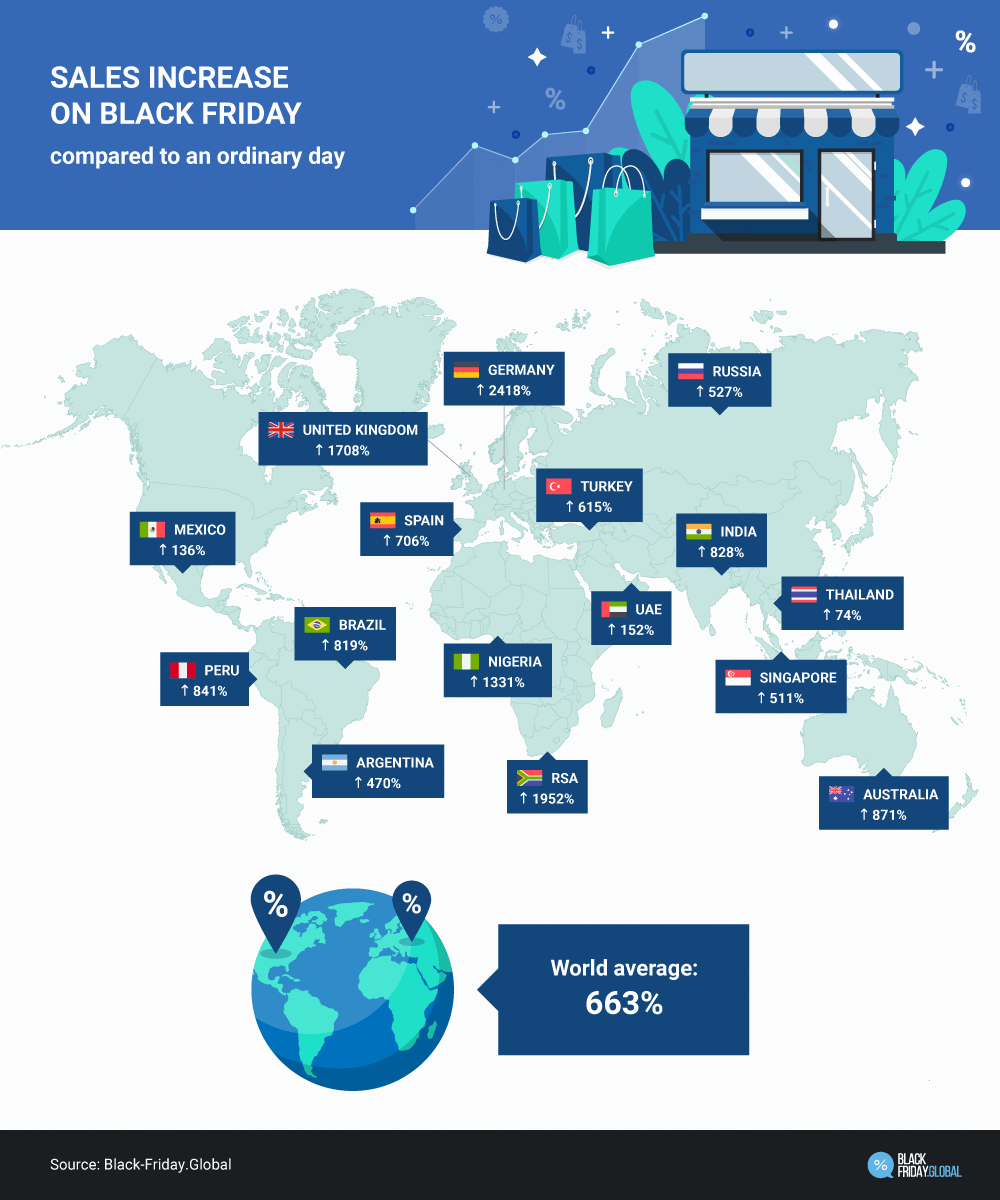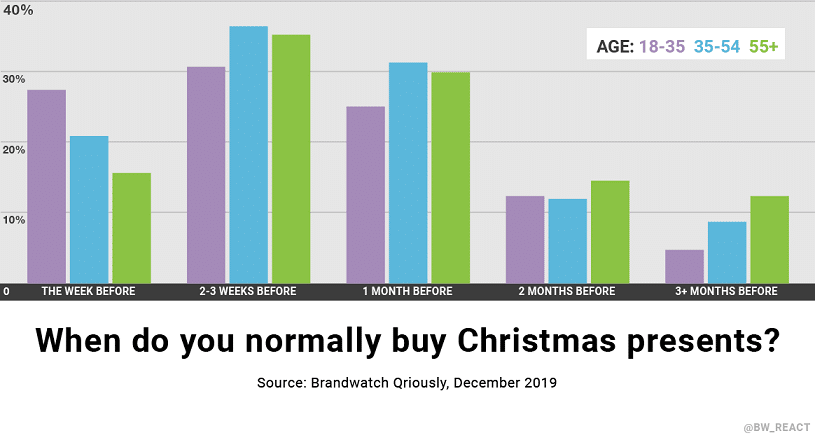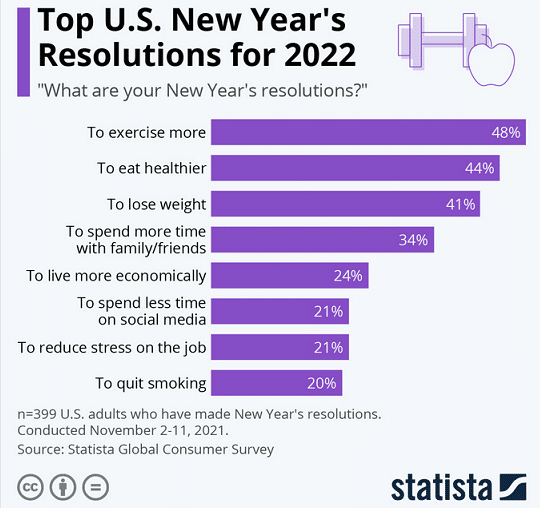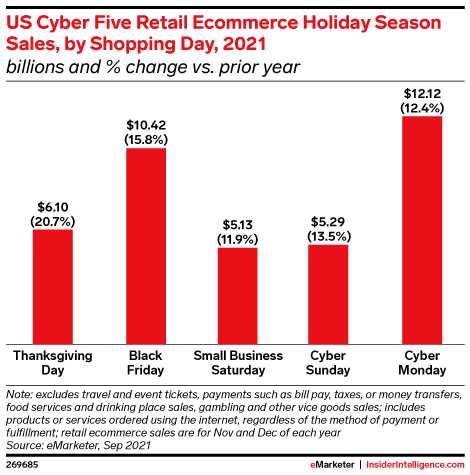From international holidays to sporting events and awareness days, there’s a theme for every day of the year. National Banana Bread Day, Amazon Prime Day, Elmo’s Birthday (yes, there are people who celebrate that).
Whether you’re an e-commerce or brick-and-mortar retailer, it’s well worth creating marketing campaigns around special dates in order to attract more customers and increase sales: think new product launches, discounts, giveaways, and themed events.
To do this successfully, you need to plan your participation in advance, using a retail calendar to compare sales year-on-year and set a budget. (You’ll also need a helping hand from software that gives you accurate inventory management and syncs data from all your sales channels—like Brightpearl.)
What is a Retail Calendar?
The retail calendar is a special calendar used by the retail industry, which breaks up the year into four- and-five-week periods. The most commonly used methods are called 4-4-5 and 4-5-4.
The 4-4-5 method divides the year into four quarters, each with 91 days (13 weeks). In each quarter, months one and two are four weeks long, and month three has five weeks. The 4-5-4 calendar is similar, but month two is given five weeks instead.
If you’re thinking that something doesn’t quite add up, you’re right. Retail calendar dates have to be multiples of seven, so in both methods, a year has 364 days instead of 365. Every five or six years, an extra week is added to the fiscal calendar to make it 53 weeks. This will be the case in 2023.
The 4-5-4 method is the one that’s recommended by the National Retail Federation (NRF). Using this method, the 2022 retail calendar starts on Sunday January 30, 2022 and ends on Saturday January 28, 2023.
Why Use a Retail Calendar?
The retail calendar makes it easier to compare your retail sales to previous years, and to plan your budget. It lets you compare sales per quarter, since each quarter has the same number of days. It also gives you the same number of weekends each year, which is useful as weekends are especially important for sales.
You can use this data to plan your marketing calendar in advance, such as scheduling ads and social media posts at times when you know customers will be most interested. And you can also use smart demand planning to ensure you have the right amount of goods in stock to meet demand.
How to Prepare Your Retail Calendar
The retail holiday calendar enables you to plan your marketing far in advance. You can create themed content, update your website, and partner with influencers or other businesses to promote your events.
Getting Shoppers to Your Store
If you’re going to make a success of your promotion, you need to make sure everyone knows about it. Brick-and-mortar stores can create eye-catching window displays, while online retailers can promote special events via website banners and CTAs. Social media has a big part to play, so cover all bases from Snapchat to LinkedIn to TikTok.
Encourage people to sign up to your mailing list for the latest updates, and send out discount coupons. You could also put together gift guides ahead of the holiday season to build excitement, including videos of products you want to push. There are plenty of downloadable templates for marketing material.
As we mentioned, there’s no shortage of special dates to choose from. You could show your brand’s support for events such as Pride Month, Juneteenth, or World Mental Health Day by raising awareness or donating a percentage of sales to a related charity. Or you could theme a promotion around the first day of spring, the winter solstice, or kids heading back to school.
You might be planning to close your physical store on a national or bank holiday, such as Labor Day, but you can still encourage online sales—especially when you use automated tools to give your staff a break. For example, Brightpearl lets you automate order fulfillment, shipping, and even reordering stock.
Keeping Shoppers Satisfied
Whether you’re planning a bunch of events or putting all your eggs in one (Easter?) basket, you have to focus on the customer experience. You’re not just making money on holiday merchandise—the aim is to build long-term customer relationships that will help your business to grow.
Make sure your business is optimized to cope with the increase in footfall and website traffic. This might involve reorganizing shift schedules or hiring extra staff, as well as ensuring that your inventory is up to date. Give your customers plenty of order fulfillment options such as BOPIS (buy online, pickup in-store) or curbside pickup.
After the rush is over, evaluate what went well and what could have gone better, so that you can make improvements for the next event. Brightpearl’s super-accurate reporting is ideal for this task, and the built-in CRM automatically creates profiles on all your customers, so you can send them relevant offers all year round using automated segmentation.
Global Calendar Dates
Your retail calendar can include as many special dates as you want to celebrate or build campaigns around. We’ve provided a few of the most popular ones below, but you could also create a promotion for International Women’s Day, World Book Day, Earth Day, or even Star Wars Day.
Just remember that some dates change every year (like Ramadan and Chinese New Year) while others differ between countries (such as Black History Month and Mother’s Day, although Father’s Day is the same everywhere).
Halloween: October 31
Halloween is a big deal in the US, and it’s getting bigger in other countries around the world. It’s a chance for brick-and-mortar stores to go all-out with the decorations, and you can theme your website and social media, too.
Customers will have plenty of choice of where to buy Halloween-related merchandise, so think outside the box and come up with some quirky ideas for boosting sales. Hold competitions and games, and engage customers by asking them to post photos of themselves using your products.
Halloween also marks the start of the holiday season, so be ready for a quick turnaround—come November 1, people will expect to see spooky stuff replaced by festive goods. (But you can still sell any remaining Halloween items at a discount to help people stock up for next year.)
Singles’ Day: November 11
This is an unofficial holiday that’s said to have been created in 1993 by Nanjing University students wanting to celebrate singlehood. Originally called Bachelors’ Day, it was appropriated by e-commerce giant Alibaba in 2009 and renamed Singles’ Day because the date, 11/11, represents four singles sticking together.
The idea quickly expanded to other countries, and it’s now one of the biggest shopping days in the world. It’s basically the opposite of Valentine’s Day, as singletons celebrate their independence by treating themselves to gifts. Apparel and accessories are popular, as are self-care products and solo dining deals.
You could hold in-store events just for singles, get people to share stories of dating disasters on social media, and have some fun with your marketing (Michael Kors once ran a promotion with the tag “Bags are better than boyfriends”).
Black Friday: November 25
This is the big one—the event that retailers welcome and dread in equal measure. Across the world, Black Friday sees a 663% increase in sales compared to a regular shopping day, but it can be stressful trying to meet demand. And it’s not just a single day; the preceding week can be as busy as Black Friday itself.
The event usually brings more people into physical stores, as well as increasing e-commerce sales. That means you need to keep your inventory in sync, and offer flexible fulfillment options. Brightpearl’s POS technology lets you sync online and offline channels in real time to avoid overselling, and gives you a live view of all activity.
Don’t forget that Small Business Saturday always takes place the day after Black Friday. If you’re a big firm, why not show support for smaller retailers by advising your customers to shop small and local on that day? It might sound counterintuitive, but it’ll position you as a brand that cares.
Cyber Monday: November 28
This always takes place on the Monday after Thanksgiving, but it’s a huge worldwide event. It was created by marketing companies in 2005 to get more people to shop online, although these days they don’t need encouragement! People also shop in-store for Cyber Monday, and BOPIS is popular since many deals are advertised ahead of the actual day.
Firms use the opportunity to sell tech items, fitting in with the cyber theme. But you can promote anything you like, including stock you didn’t manage to shift on Black Friday. With Christmas drawing ever-closer, people will be on the lookout for gift ideas.
Cyber Monday is followed immediately by Giving Tuesday, with a chance for people to support causes and communities in amongst the frenzy of holiday spending. Taking part in this event is another way to promote your brand values.
Super Saturday: December 17
Also known as Panic Saturday, this takes place on the final Saturday before Christmas. It’s when many people do last-minute shopping, so it’s an ideal opportunity to promote gift items, party supplies, and pre-orders for food and drink.
Physical stores can attract plenty of custom, as people can buy items without having to worry about shipping. However, if you’ve planned your operations carefully, you should still be able to guarantee that online orders placed on this day will arrive by Christmas Day. Brightpearl’s real-time forecasting will show you accurate stock levels.
In 2022, Super Saturday falls on the day before Hanukkah begins, so there’s an opportunity to promote last-minute gifts and special foods.
Christmas Eve: December 24
Christmas Eve always sees heavy traffic—in the US, 51% of people wait until this date to buy presents. It’s also a big day for buying groceries, and people calling into stores to collect items ordered online.
Brick-and-mortar stores benefit most from offering super-late deals, plus services like free gift wrapping as people are pressed for time. Some online retailers may offer same-day delivery if you order early on Christmas Eve, but if you can’t provide this service, try promoting gift vouchers that can be delivered instantly via email.
You could also take the opportunity to start your post-Christmas sale, instead of waiting until December 26th (Boxing Day in the UK). Consider making early-bird deals available to selected customers only, to make them feel special.
New Year’s Eve: December 31
This is a popular time to shop for special outfits, food, drinks, and supplies for New Year’s Eve parties, so retailers often discount these items to boost sales. Bars and restaurants may offer a free drink with entry to an event, while taxi and chauffeur firms could offer a discounted rate for prepaid bookings.
Shoppers also want to take advantage of the final Christmas discounts, and to get a jump on the New Year sales with early deals. To avoid long lines outside stores on New Year’s Day, retailers often start their online sales at midnight.
Promoting takeout delivery and TV streaming services are useful for the next day, when people will be staying home after a night of partying. You can also target customers preparing for lifestyle changes, with grocery options for Veganuary and Dry January, or discounted gym memberships.
US Calendar Dates
There are many holidays that are specific to the US, such as Independence Day, Memorial Day, and Presidents’ Day. Here are a couple more:
Veterans Day: November 11
Veterans Day is when the country honors current and former members of the military services. Many retailers offer discounts to them and their families on this date, and they may also choose to donate a percentage of sales to veterans’ charities or get involved in awareness campaigns. It’s more about showing support than making big bucks.
You could set up information displays in your physical store, and ask veterans to share their stories online. Consider partnering with your local council to promote parades and ceremonies, or sponsor a program that pairs schoolchildren with veterans to learn about their history.
It’s worth noting that in the UK and other countries, November 11 is Remembrance Day.
Thanksgiving Day: November 24
If Halloween marks the start of the holiday season, Thanksgiving is when it really ramps up. If they haven’t already, people like to begin their Christmas shopping around this date. And in the days before Thanksgiving, they’ll be buying groceries, drinks, and homeware ready for the feast.
Some physical stores stay open on Thanksgiving Day (often just for the afternoon), but many large retailers have chosen to close in recent years, preferring to let staff spend the day with loved ones. However, online stores are always open, so expect an uptick in sales—especially if you’re offering early Black Friday deals.
Australia Calendar Dates
Here are a couple of key dates in the Australian calendar:
Melbourne Cup Day: November 2
The Melbourne Cup is Australia’s most famous horse race, and it’s a big day in the country’s calendar. In the lead-up, people with tickets for the event will be shopping for formalwear or quirky costumes (there are prizes for the best-dressed racegoers). Demand for hats starts super-early.
Although it’s only a public holiday in the Melbourne area, it’s known as “the race that stops the nation”, and many people take the day off to watch it on TV—either in a pub or with friends and family at home. Be prepared for increased sales of party supplies, BBQ food, fancy dress outfits, and floral decorations.
Click Frenzy: November 9
Inspired by the success of Cyber Monday, Australia created its own online shopping event in 2012. Click Frenzy lasts for 53 hours and involves hundreds of major brands, who slash their prices for a limited time period.
Participating brands sign up to share their offers (and branding) on the central Click Frenzy website, as well as making the deals available on their own sites. Click Frenzy received 1.9 million visits during the 2020 event, so it’s a great way to get your brand noticed.
Customers know they need to be fast to get their hands on some astonishing deals, and they can sign up as members to get early access. Click Frenzy also runs minor sales throughout the year, focusing on specific categories—for instance there’s a travel event on March 22.
Final Thoughts
Whether it’s St Patrick’s Day or April Fool’s Day, special dates and holidays represent a great chance to boost sales and raise brand awareness. The key to success is making sure you’re fully prepared, by paying attention to the retail calendar and using a retail operations platform to streamline your inventory and logistics.
Above all, you need to deliver on the promises you make in your marketing. You can do this by using software like Brightpearl, with built-for-retail features including smart forecasting and reports, inventory management, automated ordering and fulfillment, and partnerships with major e-commerce platforms.
With the stressful tasks taken care of, you’re free to get creative and dream up exciting ideas to celebrate a year’s worth of special days. As Bing Crosby sang in Holiday Inn, “May the calendar keep bringing happy holidays to you!”

